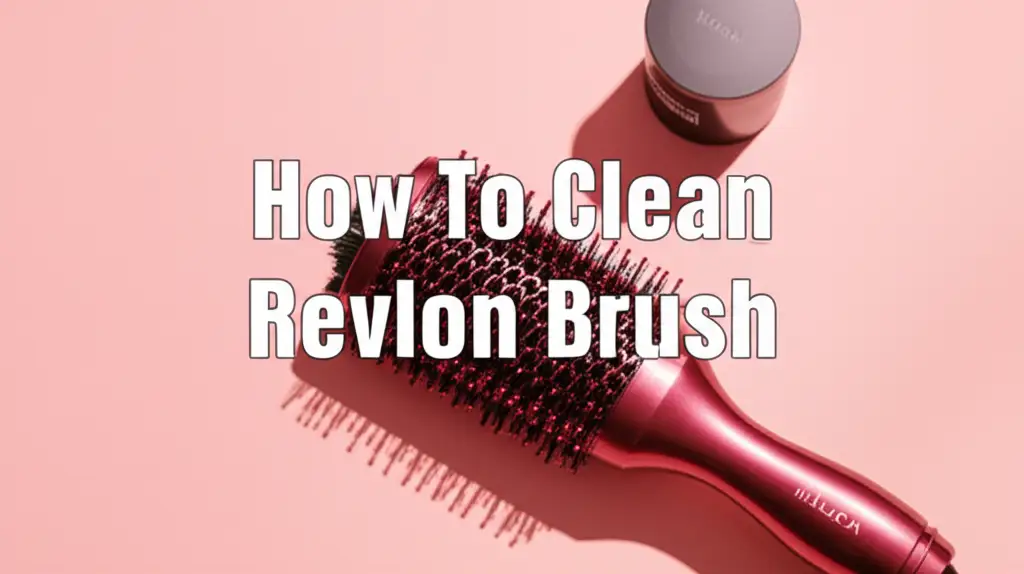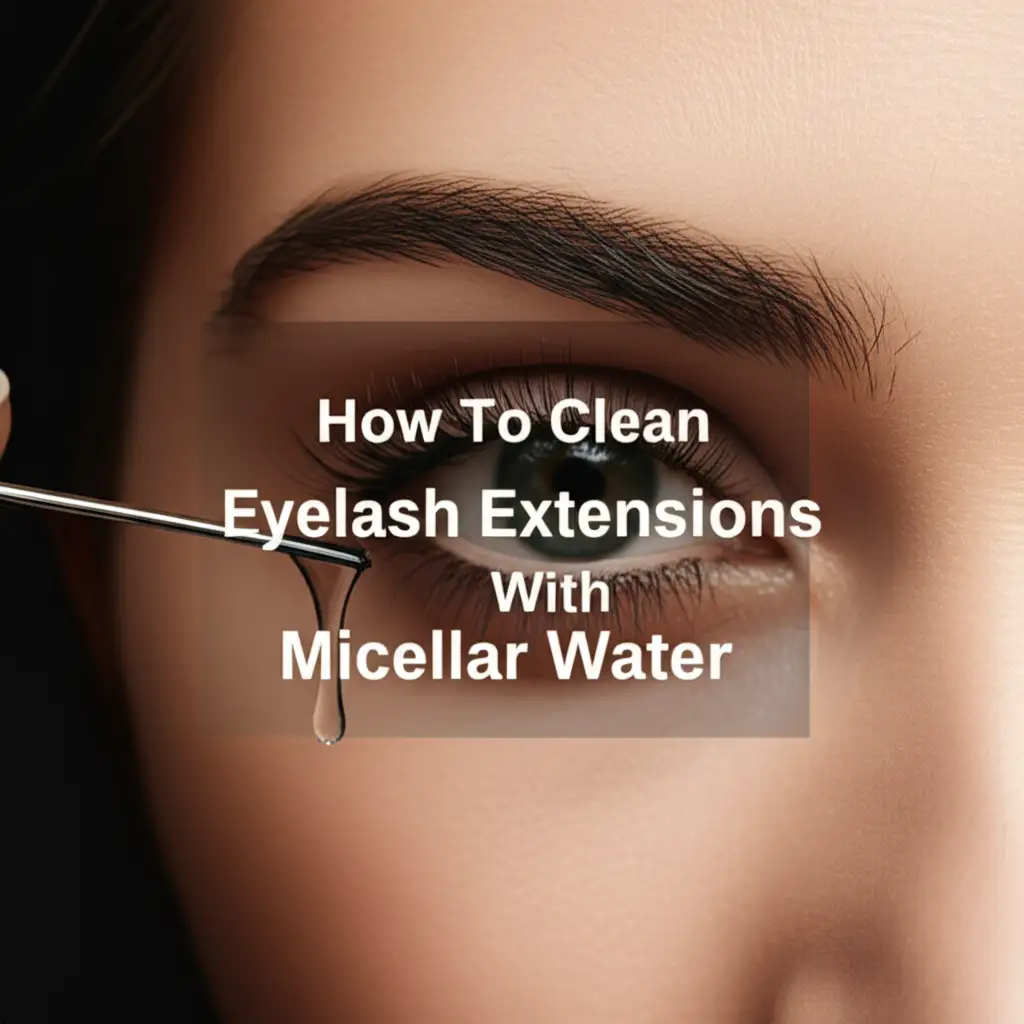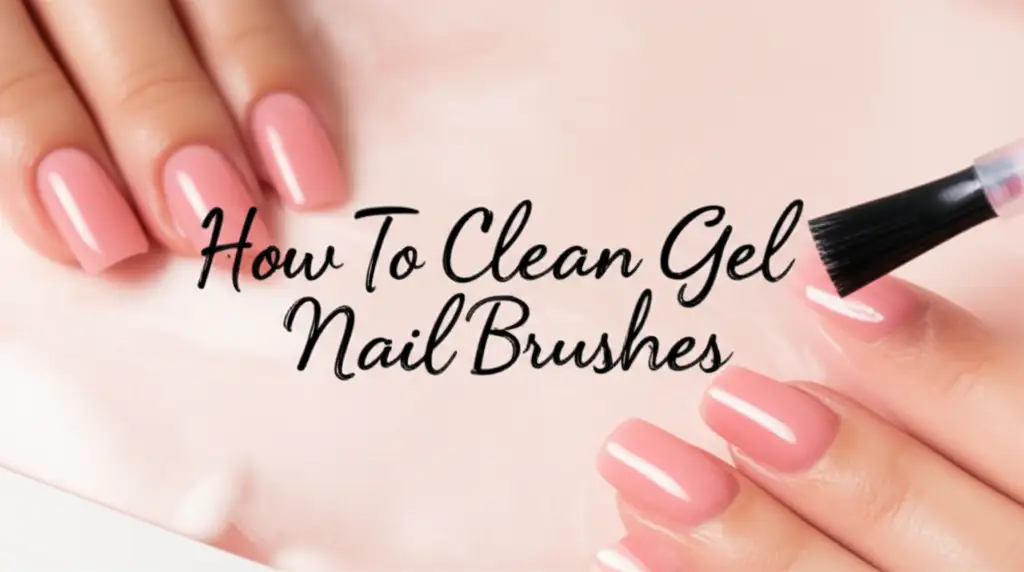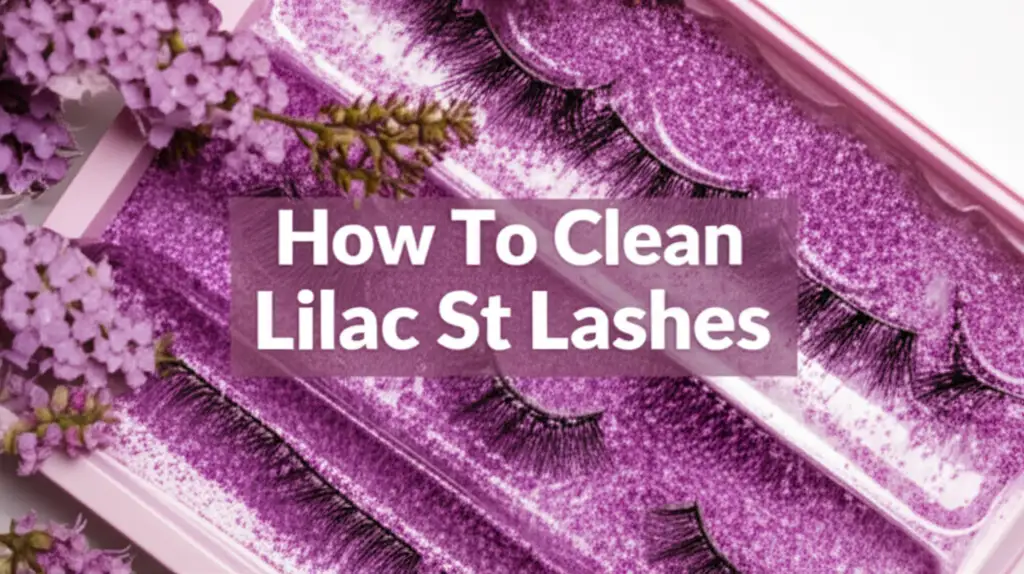· Beauty & Personal Care · 19 min read
How To Clean Blush Brush
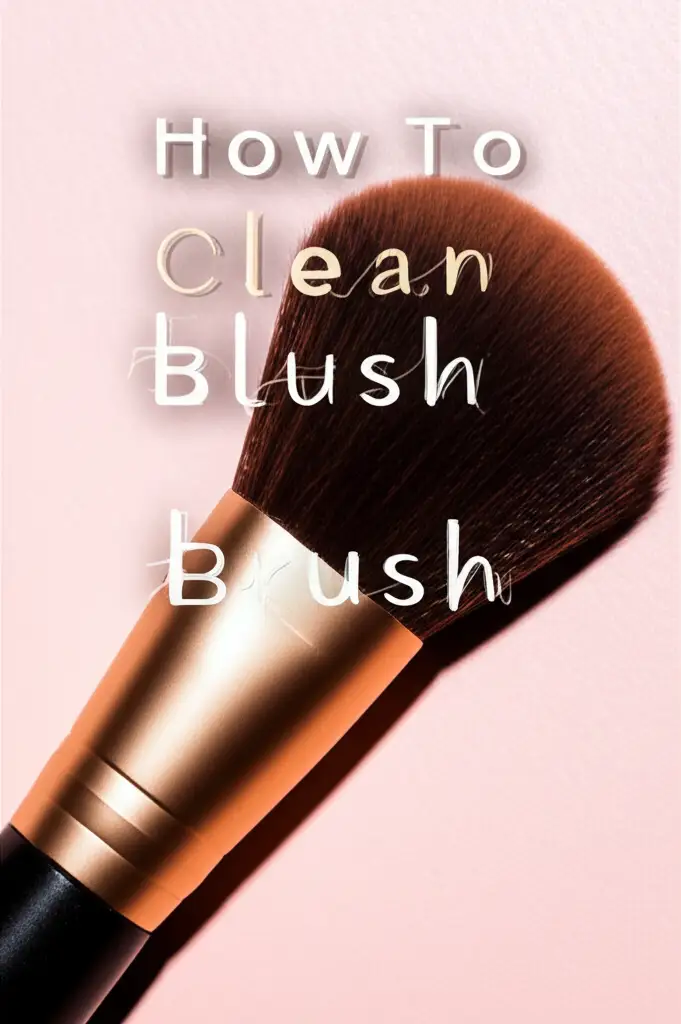
Keep Your Blush Brush Spotless and Skin Healthy
Have you ever stopped to think about what hides in your favorite blush brush? It is more than just makeup residue. Dead skin cells, oils, dirt, and bacteria can gather in the bristles. This accumulation can cause skin problems like breakouts or irritation. Knowing how to clean your blush brush correctly is very important.
Cleaning your blush brush regularly keeps your skin clear and healthy. It also helps your makeup apply smoother and look better. A clean brush applies color more evenly. Dirty brushes can make your blush look muddy. In this article, I will show you simple ways to clean, sanitize, and care for your blush brush. We will cover daily cleaning, deep cleaning, and proper drying methods. Keep reading to learn how to keep your brushes in top shape.
Takeaway
- Clean Regularly: Wash your blush brush at least once a week for deep cleaning.
- Use Gentle Cleansers: Choose mild soap, shampoo, or specific brush cleaners.
- Rinse Thoroughly: Remove all soap from the bristles to prevent residue.
- Reshape Gently: Restore the brush head’s original shape after washing.
- Dry Properly: Lay brushes flat or hang them upside down to dry completely.
To clean a blush brush, wet its bristles under lukewarm water. Apply a small amount of mild soap or brush cleaner to your palm or a cleaning mat. Swirl the brush gently in the cleanser until foam forms, working through the bristles. Rinse the brush until the water runs clear. Reshape the bristles and lay the brush flat to dry completely.
Why Cleaning Your Blush Brush Matters for Skin Health
Your blush brush touches your face every day. It picks up makeup, skin oils, and environmental particles. Over time, these things build up in the brush bristles. This creates a breeding ground for bacteria and germs. Using a dirty blush brush on your skin can lead to several problems.
One major concern is skin irritation. Accumulated dirt and old makeup can scratch or irritate sensitive skin. This may cause redness or discomfort. Dirty brushes can also spread bacteria onto your face. This increases your risk of breakouts, acne, or even infections. Imagine pressing a brush full of old makeup and bacteria directly onto your pores. This can clog them and make existing skin conditions worse. Regular cleaning removes these harmful elements. It ensures your skin stays clear and healthy. A clean brush helps your skincare products work better too. It prevents new products from mixing with old impurities.
Beyond skin health, cleaning extends the life of your brush. Dirt and oil can break down the glue that holds the bristles together. They can also damage the bristles themselves. This makes your brush shed more or lose its shape. Cleaning keeps the bristles soft and flexible. It maintains the brush’s original performance. A well-cared-for brush applies blush smoothly and evenly. It also feels soft on your skin. Neglecting to clean it makes your makeup application less effective. It also forces you to buy new brushes more often. Consider how often you use your brush. Then think about how much it collects each time. Keeping it clean is a simple step with big rewards for your skin and your tools. This practice is similar to how you would care for other personal grooming tools like learning how to clean a nail brush or how to clean an eyebrow brush.
Choosing the Right Cleanser for Your Blush Brush
Selecting the correct cleanser is a key step in how to clean blush brush effectively. The type of cleanser you choose depends on your preference and the brush material. Gentle options are always best. Harsh chemicals can damage bristles or irritate your skin. We want a product that removes makeup and oils without stripping the natural oils of the brush hairs.
Many common household items work well as brush cleansers. Mild baby shampoo is a popular choice. It is gentle enough for a baby’s skin and hair, so it is safe for delicate brush bristles. Dish soap is another option, especially for brushes caked with stubborn cream products. Just be sure to use a very small amount of dish soap. You need to rinse the brush thoroughly to avoid leaving any residue. Many beauty brands also sell specialized makeup brush cleansers. These are often formulated to dissolve makeup efficiently. They condition the bristles at the same time. These products come in various forms, like liquids, sprays, or solid soaps.
Consider the material of your blush brush when picking a cleanser. Natural hair brushes are often made from animal hair. These brushes benefit from a gentle, conditioning cleanser. This helps keep the hairs soft and prevents them from drying out. A mild shampoo, like baby shampoo, is ideal for natural hair. Synthetic brushes are made from man-made fibers. These are more durable and less absorbent. They can handle a wider range of cleansers. Dish soap works well for synthetic brushes, especially for removing oily products. Always test a new cleanser on a small part of the brush first. This ensures it does not cause any damage. Using the right cleanser is a small step. It makes a big difference in maintaining your brush’s quality.
Step-by-Step Guide to Deep Cleaning Your Blush Brush
Deep cleaning your blush brush is important for hygiene and brush longevity. I recommend a deep clean at least once a week. This process removes all built-up makeup, oil, and bacteria. Follow these steps for a thorough and effective wash.
Step 1: Wet the Bristles Hold your blush brush under lukewarm running water. Point the bristles downwards. This prevents water from getting into the ferrule. The ferrule is the metal part connecting the bristles to the handle. Water in the ferrule can loosen the glue. It can damage your brush over time. Make sure the bristles are completely wet before applying any cleanser.
Step 2: Apply Cleanser Pour a small amount of your chosen cleanser into your palm or onto a textured cleaning mat. A cleaning mat has ridges that help work the cleanser through the bristles. Swirl the wet brush bristles gently in the cleanser. Work up a lather. You will see old makeup pigment coming out of the brush. Continue swirling until the lather looks clean. If the brush is very dirty, you might need to repeat this step. You can use a similar technique when you want to learn how to clean a face brush.
Step 3: Rinse Thoroughly Again, hold the brush bristles downwards under lukewarm running water. Gently squeeze the bristles from the ferrule outwards. This helps push out the dirty, soapy water. Keep rinsing until the water running off the brush is completely clear. No soap bubbles or makeup residue should remain. Leftover soap can make bristles stiff. It can also irritate your skin. Be patient during this step; thorough rinsing is crucial.
Step 4: Reshape and Squeeze Out Excess Water After rinsing, gently squeeze any excess water from the bristles with your fingers. Shape the brush head back to its original form. For a blush brush, this usually means an oval or round shape. This helps the brush maintain its structure as it dries. Laying the brush flat on a clean towel or paper towel is the next step.
Proper Drying Methods for Blush Brushes
Drying your blush brush correctly is just as important as cleaning it. Improper drying can lead to several problems. It can damage the bristles, loosen the ferrule glue, or encourage mold growth. Always prioritize air drying and avoid heat.
Method 1: Flat Drying This is the most common and recommended drying method. After reshaping your brush, lay it flat on a clean, dry towel or paper towel. Position the brush so the bristles hang slightly over the edge of a counter or table. This allows air to circulate around all sides of the bristles. It prevents moisture from sitting in the base of the brush. Ensure the room has good airflow. Avoid humid environments. You can also place the brush on a drying rack designed for makeup brushes. These racks often hold brushes upside down, which is even better.
Method 2: Hanging Upside Down For some brushes, especially larger ones, hanging them upside down is an excellent option. This method uses gravity to pull water away from the ferrule. This protects the glue and prevents bristles from becoming splayed. You can use a dedicated brush drying rack that holds brushes by their handles. If you do not have a rack, you can improvise. Use a clothesline with clips or even rubber bands around a hanger. Just make sure the bristles are pointing down and have room to air dry. This method works well for keeping the brush shape too.
What to Avoid:
- Do not dry brushes upright: Standing brushes upright allows water to seep into the ferrule. This can loosen the glue and cause bristles to fall out. It can also lead to mold growth inside the brush handle.
- Avoid direct heat: Never use a hairdryer, direct sunlight, or a radiator to speed up drying. High heat can damage the bristles. It can melt the glue in the ferrule. This can make natural hairs brittle and synthetic hairs melt or deform.
- Allow full drying: Ensure your brush is completely dry before using it or storing it. This can take several hours, or even overnight. Using a damp brush can transfer moisture and bacteria to your makeup product. It also prevents the brush from performing its best. Proper drying preserves your brush’s quality and extends its useful life. This care is similar to what is needed when learning how to clean a hair brush.
Daily Maintenance and Quick Cleaning Tips
Deep cleaning your blush brush weekly is crucial. But daily maintenance helps keep it fresh between washes. These quick cleaning tips prevent makeup buildup and maintain brush performance. They extend the time between deep cleans.
Tip 1: Blot After Each Use After you apply blush, gently blot your brush on a clean tissue or paper towel. This removes excess powder and prevents it from settling deep into the bristles. This simple step takes seconds. It makes a big difference in how much pigment builds up. It also helps preserve the true color of your blush. This prevents color transfer when you use different shades.
Tip 2: Use a Brush Cleaning Spray For a fast refresh, use a brush cleaning spray. These sprays often contain alcohol or quick-drying solvents. They disinfect and dissolve makeup on the surface of the bristles. Spray the solution onto a clean paper towel. Then gently swirl your blush brush on the damp towel until no more makeup comes off. These sprays dry quickly, so you can use your brush almost immediately. They are excellent for quick clean-ups or spot cleaning between colors. They are not a substitute for deep cleaning, however. They clean the surface but do not remove deep-seated grime.
Tip 3: Brush Guards or Covers After daily use, consider using brush guards or covers. These small mesh sleeves fit over the brush head. They help maintain the brush’s shape and protect bristles from dust and debris. They are especially useful if you store your brushes in an open container. Covers keep your brushes cleaner longer. They also protect them during travel. Make sure the brush is fully dry before putting on a guard. Damp bristles in a cover can encourage mildew growth. Implementing these daily habits will keep your blush brush in excellent condition. This means softer bristles, better makeup application, and cleaner skin.
Caring for Natural vs. Synthetic Blush Brushes
Blush brushes come in two main types: natural hair and synthetic fiber. Each type requires slightly different care. Knowing these differences ensures you clean your brush correctly without causing damage. I will explain the best approaches for each.
Natural Hair Brushes: Natural hair brushes are often made from animal hairs like goat, squirrel, or sable. These bristles have a cuticle, much like human hair. This makes them excellent for picking up and blending powder products. The cuticle can also absorb product and natural oils. This means natural brushes can get dirty faster. They also require more gentle cleaning.
When cleaning natural hair brushes, use a mild, conditioning cleanser. Baby shampoo is a perfect choice. It cleans effectively while keeping the bristles soft and flexible. Avoid harsh soaps or strong solvents. These can strip the natural oils from the bristles. This makes them dry, brittle, and prone to shedding. When rinsing, use lukewarm water. Avoid hot water, which can damage the hair fibers. After washing, reshape the bristles carefully. Lay the brush flat to dry. This helps maintain the hair’s integrity and the brush’s shape. Proper care helps these brushes last for many years.
Synthetic Fiber Brushes: Synthetic brushes are typically made from nylon or other plastic fibers. These bristles are non-porous. They do not absorb product as much as natural hairs. This makes them ideal for cream, liquid, and gel products. They are also easier to clean and dry faster. Synthetic brushes are often more durable and less prone to shedding.
You can use a wider range of cleansers on synthetic brushes. Mild dish soap is effective at cutting through oily or creamy makeup. A specialized makeup brush cleanser also works very well. These brushes are more robust. They can withstand a bit more pressure during washing. Still, be gentle to avoid damaging the ferrule. Rinse thoroughly with lukewarm water. Like natural brushes, lay them flat or hang them upside down to dry. Because synthetic fibers do not absorb water, they usually dry much quicker. This makes them a convenient choice for everyday use and frequent washing. Understanding these differences helps you clean all your brushes correctly. This helps them last longer and perform better.
Common Blush Brush Cleaning Mistakes to Avoid
Even with good intentions, people often make mistakes when cleaning their blush brushes. These errors can damage your brushes or reduce their effectiveness. I want to highlight common pitfalls so you can avoid them.
Mistake 1: Using Hot Water Many people think hot water cleans better. However, hot water is bad for your blush brushes. It can melt the glue that holds the bristles into the ferrule. This causes bristles to loosen and fall out. Hot water also makes natural hair bristles brittle. Always use lukewarm or cool water when cleaning. This temperature is gentle on the brush materials. It still effectively removes makeup and dirt. Remember, gentle care extends brush life.
Mistake 2: Getting the Ferrule Wet The ferrule is the metal part that connects the bristles to the handle. Water should not enter this area. If water seeps into the ferrule, it can loosen the glue. This causes bristle shedding or the entire brush head to detach. When rinsing, always keep the brush bristles pointing downwards. This ensures water only runs through the bristles and away from the ferrule. This simple technique protects your brush from premature damage. It helps keep your brushes in good shape for a long time.
Mistake 3: Drying Upright It might seem logical to dry your brush standing up in a cup or holder. However, this is a major mistake. When a brush dries upright, water runs down the bristles and collects in the ferrule. This traps moisture inside, leading to glue degradation and mold or mildew growth. Mold is unhygienic and can cause skin issues. Always lay your brush flat on a clean towel or paper towel. Alternatively, hang it upside down using a brush drying rack. Proper drying protects the brush’s structure and prevents microbial growth. This step is critical for brush hygiene.
Mistake 4: Not Rinsing Enough Leaving soap residue in your brush is another common error. Unrinsed soap can make bristles stiff and scratchy. It can also cause skin irritation or clogged pores when you use the brush. Ensure you rinse your blush brush thoroughly until the water running off the bristles is completely clear. Squeeze the bristles gently under running water to ensure all cleanser is removed. A well-rinsed brush feels soft and performs beautifully. Avoid these common mistakes to keep your blush brushes clean, durable, and safe for your skin. This also applies to other brushes, like when you need to understand how to clean a beard brush.
How Often Should You Clean Your Blush Brush?
Determining how often to clean your blush brush depends on several factors. These include how often you use it, the type of makeup you apply, and your skin type. I will outline general guidelines for optimal brush hygiene.
For everyday users, a deep clean once a week is ideal. If you use your blush brush daily, makeup, skin oils, and bacteria accumulate quickly. A weekly deep clean removes this buildup. It keeps your brush hygienic and effective. This frequency helps prevent breakouts and ensures smooth makeup application. Think of it like washing your face; it’s a regular part of good hygiene. This goes for all facial makeup brushes. Just like learning how to clean a straightening brush for hair, regular maintenance is key.
If you use your blush brush less frequently, perhaps only a few times a week, you might extend deep cleaning to every two weeks. The key is to monitor the brush’s appearance and performance. If it looks visibly dirty, feels stiff, or if blush starts applying unevenly, it is time for a wash. Remember, even if you do not use it often, dust and airborne particles can still settle on the bristles.
For makeup artists or those with sensitive or acne-prone skin, more frequent cleaning is beneficial. A deep clean every 3-4 days might be necessary. This minimizes bacteria transfer to very sensitive skin. It helps reduce the risk of irritation or new breakouts. Also, if you use cream or liquid blushes, clean your brush more often. Liquid products cause more buildup than powders. They create a moister environment for bacteria to grow. Daily spot cleaning with a brush spray is also helpful between deep washes. This removes surface makeup. It keeps your brush ready for use. Consistent cleaning ensures your blush brush is always a clean tool. It helps your skin remain healthy and clear.
When to Replace Your Blush Brush
Even with the best cleaning practices, makeup brushes do not last forever. Knowing when to replace your blush brush is important for hygiene and makeup application quality. Here are signs indicating it is time for a new one.
One clear sign is excessive shedding. If your blush brush starts losing a lot of bristles every time you use or clean it, its life is nearing its end. This indicates the glue in the ferrule is failing or the bristles are breaking down. A shedding brush leaves stray hairs on your face, which is annoying and unprofessional. It also means the brush is losing its density and effectiveness.
Another sign is a change in the brush’s shape or feel. If your blush brush no longer holds its original shape, becomes splayed, or feels rough against your skin, it is time to replace it. A brush that has lost its shape cannot apply product precisely. Rough bristles can irritate your skin and make blending difficult. Even with proper washing and reshaping, sometimes the fibers just wear out. They lose their softness and resilience over time.
Finally, consider the hygiene aspect. If you have been sick, especially with a bacterial or viral infection, it is often best to replace makeup brushes that touched your face during that time. While cleaning can kill most germs, some might linger. It is a proactive step to prevent re-infection or spreading germs. Also, if you notice any persistent odor or discoloration that does not go away with cleaning, it is a sign of bacterial or fungal growth. In such cases, discard the brush immediately. Replacing your blush brush when needed ensures you always have a clean, effective tool. This helps keep your skin healthy and your makeup looking flawless.
FAQs About Cleaning Blush Brushes
Can I use regular soap to clean my blush brush?
Yes, you can use regular mild soap to clean your blush brush. Gentle bar soap or liquid hand soap works. Make sure the soap is mild and free from harsh chemicals. Rinse the brush very well to remove all soap residue. This prevents irritation and keeps bristles soft.
How often should I deep clean my blush brush?
You should deep clean your blush brush at least once a week if you use it daily. If you use it less often, a deep clean every two weeks is usually enough. For sensitive skin or liquid makeup, clean it more frequently. Regular cleaning keeps your brush hygienic.
What is the best way to dry a blush brush?
The best way to dry a blush brush is to lay it flat on a clean towel. Let the bristles hang slightly over the edge of a counter. This allows air to circulate around all bristles. You can also hang it upside down in a brush drying rack. Never dry brushes upright.
Can a dirty blush brush cause acne?
Yes, a dirty blush brush can definitely cause acne. It accumulates dirt, oil, dead skin cells, and bacteria from your face and the environment. When you use a dirty brush, you transfer these impurities back onto your skin. This can clog pores and lead to breakouts or irritation.
How do I know if my blush brush is completely dry?
Your blush brush is completely dry when the bristles feel dry to the touch all the way to the base. It should also feel light and fluffy again. It can take several hours, or even overnight, for a brush to dry fully. Do not use a damp brush.
Is alcohol good for cleaning blush brushes?
Alcohol-based brush cleaners can sanitize and quickly remove makeup. They are good for spot cleaning between uses. However, using pure alcohol or too much alcohol can dry out natural hair bristles. It can also damage the glue in the ferrule over time. Use specialized brush cleaning solutions instead.
Conclusion: Embrace a Cleaner Blush Routine
You now understand the simple steps for how to clean your blush brush. Regular cleaning is not just about keeping your makeup tools looking nice. It is a vital part of your overall skin health routine. By washing your blush brush weekly, you remove harmful bacteria, old makeup, and oils. This prevents skin irritation and breakouts. It also ensures your makeup applies smoothly every time.
Remember to choose a gentle cleanser, rinse thoroughly, and dry your brush properly. Laying it flat or hanging it upside down protects its shape and integrity. Daily quick cleaning helps extend the time between deep washes. It keeps your brush fresh for everyday use. Investing a little time in brush care will make a big difference. Your skin will thank you, and your makeup will look better. Make brush cleaning a consistent part of your beauty ritual. Start today and enjoy the benefits of a truly clean blush brush.
- makeup brush cleaning
- blush brush care
- beauty hygiene
- cosmetic tools

